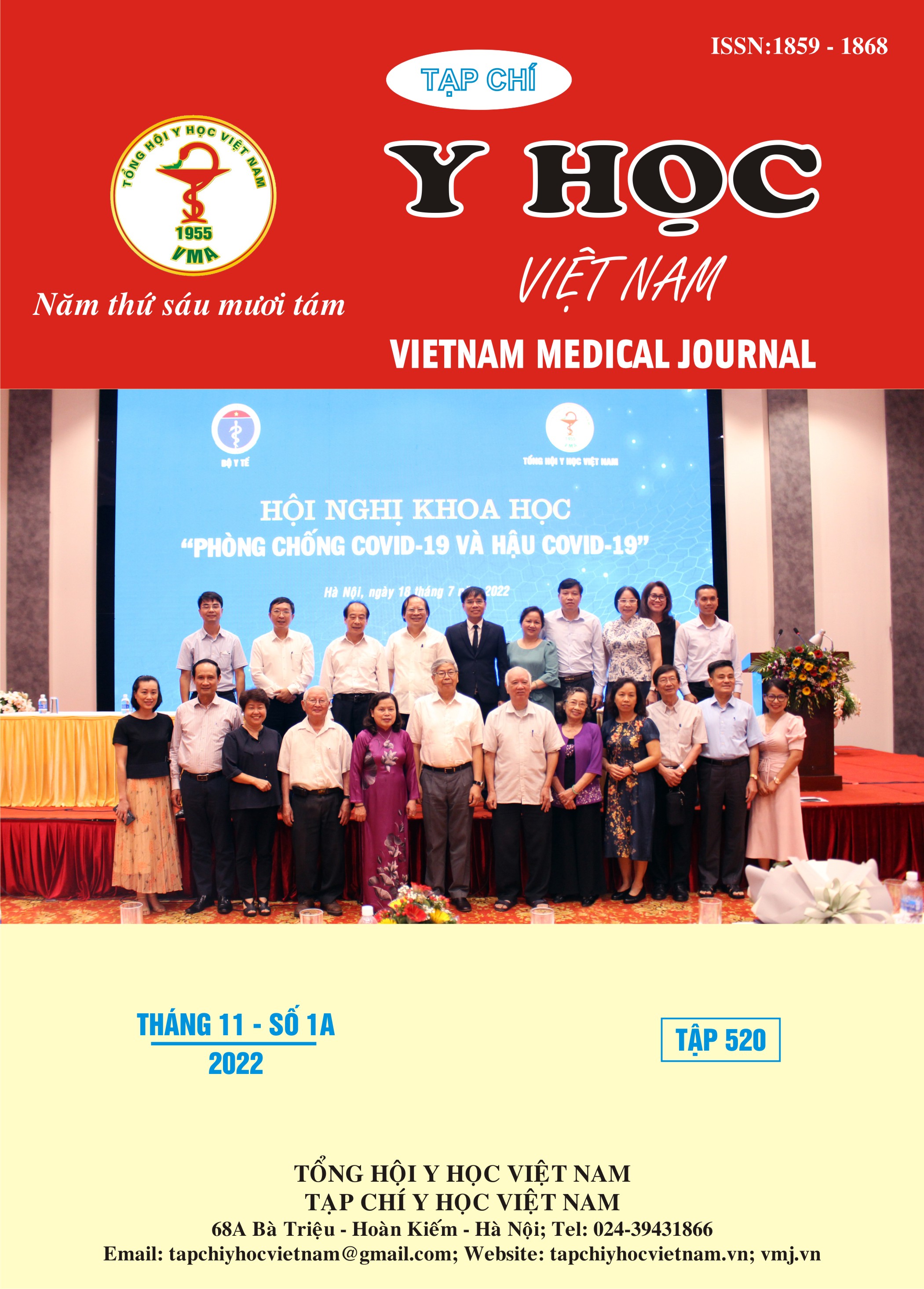HIỆU QUẢ CỦA THỞ OXY LÀM ẨM DÒNG CAO QUA CANUYN MŨI TRÊN BỆNH NHÂN ĐỢT CẤP BỆNH PHỔI TẮC NGHẼN MẠN TÍNH
Nội dung chính của bài viết
Tóm tắt
Mục tiêu: Đánh giá hiệu quả của kỹ thuật thở oxy làm ẩm dòng cao qua canuyn mũi (HHFNC) trên bệnh nhân đợt cấp bệnh phổi tắc nghẽn mãn tính (COPD). Phương pháp nghiên cứu: Nghiên cứu tiến cứu can thiệp, thu thập số liệu toàn bộ bệnh nhân được chẩn đoán đợt cấp COPD theo tiêu chuẩn GOLD 2020 nhập viện vào Trung tâm cấp cứu được thở HHFNC trong thời gian từ 08/2021 đến 07/2022. Đánh giá các chỉ số lâm sàng và khí máu tại các thời điểm trước và sau HHFNC. Kết quả: Tỷ lệ thành công với HHFNC trên bệnh nhân đợt cấp COPD là 65,6% (21/32 bệnh nhân). HHFNC có hiệu quả trong cải thiện các thông số lâm sàng và khí máu sau 48 giờ so với trước can thiệp, cụ thể: tần số tim (88,90 so với 102,72), nhịp thở (20,67 so với 27,06), SpO2 (92,24 so với 83,66), pH (7,44 so với 7,30), PaCO2 (46,71 so với 61,45), PaO2 (95,34 so với 85,03), PaO2/FiO2 (326,19 so với 246,13), FiO2 (29,0 so với 35,31), sự khác biệt này có ý nghĩa thống kê (p<0,05). Kết luận: HHFNC có hiệu quả làm giảm nguy cơ đặt nội khí quản, cải thiện về lâm sàng và khí máu trên bệnh nhân đợt cấp COPD.
Chi tiết bài viết
Từ khóa
Đợt cấp bệnh phổi tắc nghẽn mãn tính, COPD, HHFNC
Tài liệu tham khảo
2. Seemungal T.A., Donaldson G.C., Paul E.A., et al. (1998). Effect of exacerbation on quality of life in patients with chronic obstructive pulmonary disease. Am J Respir Crit Care Med, 157(5 Pt 1), 1418–1422.
3. Bräunlich J., Köhler M., Wirtz H. (2016). Nasal highflow improves ventilation in patients with COPD. Int J Chron Obstruct Pulmon Dis, 11, 1077–1085.
4. Hernández G., Vaquero C., Colinas L., et al. (2016). Effect of Postextubation High-Flow Nasal Cannula vs Noninvasive Ventilation on Reintubation and Postextubation Respiratory Failure in High-Risk Patients: A Randomized Clinical Trial. JAMA, 316(15), 1565–1574.
5. Jing G., Li J., Hao D., et al. (2019). Comparison of high flow nasal cannula with noninvasive ventilation in chronic obstructive pulmonary disease patients with hypercapnia in preventing postextubation respiratory failure: A pilot randomized controlled trial. Res Nurs Health, 42(3), 217–225.
6. Kim V., Aaron S.D. (2018). What is a COPD exacerbation? Current definitions, pitfalls, challenges and opportunities for improvement. Eur Respir J, 52(5).
7. Pisani L., Fasano L., Corcione N., et al. (2017). Change in pulmonary mechanics and the effect on breathing pattern of high flow oxygen therapy in stable hypercapnic COPD. Thorax, 72(4), 373–375.
8. Sun J., Li Y., Ling B., et al. (2019). High flow nasal cannula oxygen therapy versus non-invasive ventilation for chronic obstructive pulmonary disease with acute-moderate hypercapnic respiratory failure: an observational cohort study. Int J Chron Obstruct Pulmon Dis, 14, 1229–1237.
9. Tan D., Walline J.H., Ling B., et al. (2020). High-flow nasal cannula oxygen therapy versus non-invasive ventilation for chronic obstructive pulmonary disease patients after extubation: a multicenter, randomized controlled trial. Crit Care, 24(1), 489.
10. Global Initiative for Chronic Obstructive Lung Disease (2021), Pocket Guide to COPD Diagnosis, Management and Prevention - A Guide for Health Care Professionals: 2022 Report.


